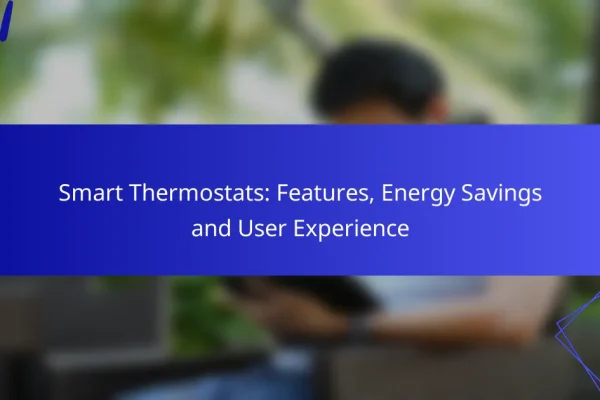What are the best smart home gadgets for 2023?
The best smart home gadgets for 2023 combine convenience, efficiency, and advanced technology to enhance daily living. Key options include voice assistants, smart lighting, security devices, and climate control systems that integrate seamlessly into your home environment.
Amazon Echo Dot (5th Gen)
The Amazon Echo Dot (5th Gen) is a compact smart speaker that offers voice control through Alexa. It allows users to play music, control smart home devices, set alarms, and access information hands-free.
Consider its built-in speaker quality and compatibility with a wide range of smart home products. The Echo Dot can serve as a central hub for your smart home, making it easy to manage multiple devices with simple voice commands.
Google Nest Hub (2nd Gen)
The Google Nest Hub (2nd Gen) features a touchscreen display that provides visual feedback for voice commands. It allows users to view photos, control smart devices, and access Google services like calendar and weather updates.
This device is particularly useful for managing daily routines and can act as a digital photo frame when not in use. Its integration with Google Assistant makes it a versatile addition to any smart home setup.
Philips Hue Smart Bulbs
Philips Hue Smart Bulbs offer customizable lighting solutions that can be controlled via smartphone or voice. These bulbs allow users to adjust brightness, color, and schedules, enhancing ambiance and energy efficiency.
Consider the range of colors and the ability to create scenes for different occasions. Philips Hue bulbs can also be integrated with other smart home systems, providing a cohesive experience throughout your home.
Ring Video Doorbell Pro 2
The Ring Video Doorbell Pro 2 enhances home security with high-definition video and two-way audio. It allows homeowners to see and communicate with visitors remotely through their smartphones.
This device features advanced motion detection and customizable alerts, ensuring you stay informed about activity at your front door. Its integration with other Ring products creates a comprehensive security ecosystem.
Ecobee SmartThermostat with Voice Control
The Ecobee SmartThermostat with Voice Control optimizes home heating and cooling for energy efficiency. It learns user preferences and adjusts settings automatically, helping to reduce energy costs.
This thermostat is compatible with various smart home systems and can be controlled via voice commands. Consider its ability to monitor and report energy usage, making it a practical choice for eco-conscious homeowners.
How do smart home devices improve energy efficiency?
Smart home devices enhance energy efficiency by automating and optimizing energy consumption in households. They enable users to monitor usage patterns and adjust settings remotely, leading to significant savings on utility bills.
Smart thermostats reduce heating costs
Smart thermostats learn your schedule and preferences, adjusting heating and cooling automatically to minimize energy use. By programming these devices to lower the temperature when you’re away or asleep, you can save up to 10-20% on heating costs annually.
When selecting a smart thermostat, look for features like geofencing, which detects when you’re home or away, and integration with other smart devices. Popular models often support voice commands and mobile app controls for added convenience.
Smart lighting systems lower electricity use
Smart lighting systems allow you to control lights remotely and set schedules to ensure lights are only on when needed. Utilizing LED bulbs with smart controls can reduce electricity consumption by up to 75% compared to traditional incandescent bulbs.
Consider systems that offer motion sensors or dimming capabilities, as these features can further enhance energy savings. For example, lights can automatically turn off in unoccupied rooms or adjust brightness based on natural light levels.
What are the key features of smart home technology?
Smart home technology encompasses various features that enhance convenience, security, and energy efficiency in residential settings. Key features include remote control via smartphone apps, voice assistant integration, and home automation capabilities that allow users to schedule and manage devices seamlessly.
Remote control via smartphone apps
Remote control through smartphone apps allows users to manage their smart home devices from anywhere with an internet connection. This feature is essential for monitoring security cameras, adjusting thermostats, or turning lights on and off while away from home.
Most smart home devices come with dedicated apps that provide user-friendly interfaces. When choosing devices, consider compatibility with your smartphone’s operating system and the app’s functionality, such as real-time notifications or remote access capabilities.
Voice assistant integration
Voice assistant integration enables users to control smart home devices using voice commands through platforms like Amazon Alexa, Google Assistant, or Apple Siri. This hands-free control enhances convenience, especially when multitasking or when hands are occupied.
To ensure seamless integration, check that your smart devices are compatible with your chosen voice assistant. Additionally, consider setting up routines or custom commands to streamline your daily tasks, such as turning off all lights with a single phrase.
Home automation and scheduling
Home automation allows users to create schedules and routines for their smart devices, enhancing energy efficiency and convenience. For example, you can program lights to turn on at sunset or set your thermostat to adjust temperatures based on your daily schedule.
When implementing automation, prioritize devices that support scheduling features and consider using a central hub for better control. Be mindful of potential pitfalls, such as overcomplicating your system, which can lead to confusion or malfunction. Start with a few key routines and expand as you become more comfortable with the technology.
How to choose the right smart home ecosystem?
Choosing the right smart home ecosystem involves assessing compatibility with your existing devices, ease of use, and the range of features offered. Prioritize systems that integrate seamlessly with your current technology to ensure a smooth transition and optimal functionality.
Compatibility with existing devices
When selecting a smart home ecosystem, check if it supports your current devices, such as smart lights, thermostats, and security cameras. Popular ecosystems like Google Home and Amazon Alexa offer broad compatibility with many third-party products, which can save you money and hassle.
Consider the communication protocols used by your devices, such as Wi-Fi, Zigbee, or Z-Wave. A system that supports multiple protocols will provide greater flexibility in adding new devices over time.
Ease of use and setup
Ease of use is crucial when choosing a smart home ecosystem. Look for systems with intuitive apps and straightforward installation processes. Many ecosystems offer step-by-step guides and user-friendly interfaces that simplify setup and daily operation.
Additionally, consider the learning curve associated with the ecosystem. Systems that provide voice control and automation features can enhance convenience, but ensure they are easy to navigate for all household members. Avoid overly complex setups that may lead to frustration and decreased usage.
What are the security features of smart home gadgets?
Smart home gadgets typically include several security features designed to protect user data and privacy. Key elements such as encryption, two-factor authentication, and regular software updates are essential for safeguarding these devices against unauthorized access.
Encryption and data protection
Encryption is a critical security feature for smart home gadgets, ensuring that data transmitted between devices and servers is unreadable to anyone without the proper decryption key. Most devices use advanced encryption standards, such as AES-128 or AES-256, to secure communications.
When selecting smart home devices, look for those that explicitly mention encryption in their specifications. Additionally, ensure that the devices receive regular firmware updates to address potential vulnerabilities and enhance data protection.
Two-factor authentication
Two-factor authentication (2FA) adds an extra layer of security by requiring users to provide two forms of identification before accessing their smart home systems. This typically involves a password and a second factor, such as a text message code or an authentication app.
Implementing 2FA can significantly reduce the risk of unauthorized access. Always enable this feature when available, and choose a strong, unique password for your smart home accounts to further enhance security.






